Posters by Merita Dreshaj
Thesis Chapters by Merita Dreshaj

This work focuses on the study of paleodiet of selected burials and fauna from Bribirska Glavica,... more This work focuses on the study of paleodiet of selected burials and fauna from Bribirska Glavica, Croatia via stable isotopes of carbon and nitrogen. Carbon stable isotopes in bone collagen can distinguish between two types of plants (C3 and C4) whilst nitrogen isotopic composition gives an estimation of the trophic levels and the amount of protein consumed. The results are compared to several factors such as the burial context, health, time period, social status, trauma, sex and age. An attempt was made to understand the impact of these factors on stable isotopic values and, hence, the choice of diet, contextualising the results within known historical and archaeological data. This research is compared to the study done on the area of Ravni Kotari, geographical area where Bribirska Glavica is situated, extending the paleo-dietary data range to Late Medieval period in the hinterland of Dalmatia.
KEY WORDS: paleodiet, carbon isotopes, nitrogen isotopes, Bribirska Glavica, Ravni Kotari
Books by Merita Dreshaj
Vale de Barrancas 1, A necrópole de hipogeus do Neolítico, 2020
Cultural and funerary uses of red pigments are frequently discovered in Neolithic and Chalcolithi... more Cultural and funerary uses of red pigments are frequently discovered in Neolithic and Chalcolithic contexts across the Iberian Peninsula. While ferric pigments (like ochre) usually indicate a locally-obtained raw material, the far less abundant cinnabar (mercury sulfide) can be used as a marker for long-distance exchange networks. Reported uses of cinnabar include metallurgy, medicine, preservative, body painting and ceramic decoration. In this study, a multi-analytical approach was taken to investigate red pigments discovered in funerary and ritual contexts from Vale de Barrancas hypogeum cemetery in Alentejo, Portugal.
Papers in English by Merita Dreshaj
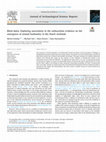
JARS reports, 2022
The emergence of animal husbandry in the Netherlands remains the subject of much speculation. Cha... more The emergence of animal husbandry in the Netherlands remains the subject of much speculation. Challenges in identifying domesticated animals among the faunal remains, inconsistent excavation documentation, and flawed radiocarbon analysis have resulted in questionable chronologies. This paper examines the available radiocarbon evidence from selected sites which are the mainstay of early examples of domesticated animals in the Netherlands, between 5000 and 4000 BCE. 1 We approach the legacy data in two ways: by employing principles of chronometric hygiene to reassess the radiocarbon datasets of selected sites and by exploring the use of such data for future studies in chronology by means of Bayesian chronological modelling. The latter is demonstrated with a case study, whereby we employ legacy data from Hardinxveld-Giessendam De Bruin in Bayesian models to demonstrate that, despite their shortcomings, such dates remain a valuable resource for much needed future chronological analysis.

Radiocarbon, 2024
Short-duration archeological sites situated entirely within plateaus in the radiocarbon calibrati... more Short-duration archeological sites situated entirely within plateaus in the radiocarbon calibration curve pose unique challenges for our understanding of past processes at regional and global scales. This paper aims to overcome these limitations by leveraging the specific characteristics of two depositional contexts, the Early Neolithic Swifterbant Culture sites S3 and S4, located in the Dutch wetlands. These sites are of exceptional significance as they provide the earliest conclusive evidence of crop cultivation and animal husbandry outside the expansion of Linearbandkeramik (LBK) farmers in northwestern Europe. Here, we present a customized approach that combines radiocarbon dating and Bayesian modeling, predicated on vertical sequences of short-lived plant remains. Our innovative approach enables us to determine, at a fine scale, the temporal position and duration of the prominent archeological contexts at S3 and S4, and explore the chronological relationship between the two sites. Through our analysis, we propose a new chronology for the onset of Neolithization in the Dutch wetlands.
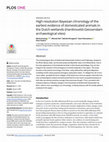
PLOS ONE, 2023
The archaeological sites of Hardinxveld-Giessendam de Bruin and Polderweg, situated in the Rhine-... more The archaeological sites of Hardinxveld-Giessendam de Bruin and Polderweg, situated in the Rhine-Meuse delta, are the best-preserved Mesolithic sites in the Netherlands. Due to the early appearance of domesticated animals in their faunal assemblage, they are also integral to the research of the emergence of animal husbandry in the region. This study focuses on the precise chronology of the sites, using radiocarbon dating and Bayesian modelling of both newly acquired and legacy radiocarbon dates. To mitigate the risk of erroneous dates, we dated the bone collagen of 26 herbivorous and one aquatic mammals from clear archaeological contexts and discovered that the most recent occupational phases at both sites are several centuries younger than previously thought. This is consistent with material evidence of lifestyle changes in the final phase at Hardinxveld-Giessendam de Bruin, which is now, according to our chronology, contemporaneous with the similar patterns produced in the region.
Scientific Reports, 2022
Crombé et al. present data which in their opinion provide indications for local animal husbandry ... more Crombé et al. present data which in their opinion provide indications for local animal husbandry in the northwest European lowlands as early as 4800/4600 cal BC. Their argument is built on radiocarbon (14 C) and stable isotope analyses of bones attributed to sheep/goat and cattle from the site of Bazel "Sluis", northwest Belgium. Focussing on the bone remains, we argue that their conclusions are unsupported due to lack of direct evidence for a local origin of the animals and uncertainty about the domestic status of the cattle. We propose that the Bazel assemblage provides important new data for the study of the role of domesticates in the 5th millennium cal BC, but that it does not provide new insights into the timing of incipient animal husbandry outside the loess belt. Instead, it leaves room for multiple models of cultural behaviour.
Papers by Merita Dreshaj
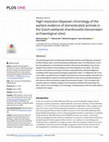
PLOS ONE, 2023
The archaeological sites of Hardinxveld-Giessendam de Bruin and Polderweg, situated in the Rhine-... more The archaeological sites of Hardinxveld-Giessendam de Bruin and Polderweg, situated in the Rhine-Meuse delta, are the best-preserved Mesolithic sites in the Netherlands. Due to the early appearance of domesticated animals in their faunal assemblage, they are also integral to the research of the emergence of animal husbandry in the region. This study focuses on the precise chronology of the sites, using radiocarbon dating and Bayesian modelling of both newly acquired and legacy radiocarbon dates. To mitigate the risk of erroneous dates, we dated the bone collagen of 26 herbivorous and one aquatic mammals from clear archaeological contexts and discovered that the most recent occupational phases at both sites are several centuries younger than previously thought. This is consistent with material evidence of lifestyle changes in the final phase at Hardinxveld-Giessendam de Bruin, which is now, according to our chronology, contemporaneous with the similar patterns produced in the region.
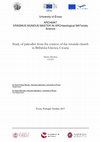
This work focuses on the study of paleodiet of selected burials and fauna from Bribirska Glavica,... more This work focuses on the study of paleodiet of selected burials and fauna from Bribirska Glavica, Croatia via stable isotopes of carbon and nitrogen. Carbon stable isotopes in bone collagen can distinguish between two types of plants (C3 and C4) whilst nitrogen isotopic composition gives an estimation of the trophic levels and the amount of protein consumed. The results are compared to several factors such as the burial context, health, time period, social status, trauma, sex and age. An attempt was made to understand the impact of these factors on stable isotopic values and, hence, the choice of diet, contextualising the results within known historical and archaeological data. This research is compared to the study done on the area of Ravni Kotari, geographical area where Bribirska Glavica is situated, extending the paleo-dietary data range to Late Medieval period in the hinterland of Dalmatia; RESUMO: (Estudo da dieta paleo no context da “rotunda” igreja em Bribirska Glavica, Croá...
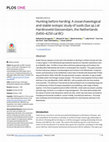
PLOS ONE
Suids (Sus sp.) played a crucial role in the transition to farming in northern Europe and, like i... more Suids (Sus sp.) played a crucial role in the transition to farming in northern Europe and, like in many regions, in the Netherlands pig husbandry became an important subsistence activity at Neolithic sites. Yet little is known about wild boar palaeoecology and hunting in the Late Mesolithic Netherlands with which to contextualize this transition. This paper presents the first multi-proxy analysis of archaeological suid remains in the Netherlands. It explores human-suid interactions at the Swifterbant culture sites of Hardinxveld-Giessendam Polderweg and De Bruin (5450–4250 BC) through biometric analysis, estimation of age-at-death, and stable carbon and nitrogen isotope analysis. The results reveal targeted hunting of adult wild boar in the Late Mesolithic (5450–4850 BC), with a possible shift over time towards more juveniles. The wild boar in this period are demonstrated to be of comparably large size to contemporary northern European populations and exhibiting a wide range of diet...
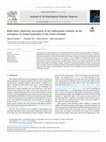
Journal of Archaeological Science: Reports, 2022
The emergence of animal husbandry in the Netherlands remains the subject of much speculation. Cha... more The emergence of animal husbandry in the Netherlands remains the subject of much speculation. Challenges in identifying domesticated animals among the faunal remains, inconsistent excavation documentation, and flawed radiocarbon analysis have resulted in questionable chronologies. This paper examines the available radiocarbon evidence from selected sites which are the mainstay of early examples of domesticated animals in the Netherlands, between 5000 and 4000 BCE. 1 We approach the legacy data in two ways: by employing principles of chronometric hygiene to reassess the radiocarbon datasets of selected sites and by exploring the use of such data for future studies in chronology by means of Bayesian chronological modelling. The latter is demonstrated with a case study, whereby we employ legacy data from Hardinxveld-Giessendam De Bruin in Bayesian models to demonstrate that, despite their shortcomings, such dates remain a valuable resource for much needed future chronological analysis.
EAA Kiel 6-11 September 2021, 2021
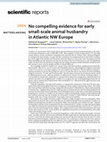
Scientific Reports, 2022
Crombé et al. 1 present data which in their opinion provide indications for local animal husbandr... more Crombé et al. 1 present data which in their opinion provide indications for local animal husbandry in the northwest European lowlands as early as 4800/4600 cal BC. Their argument is built on radiocarbon (14 C) and stable isotope analyses of bones attributed to sheep/goat and cattle from the site of Bazel "Sluis", northwest Belgium. Focussing on the bone remains, we argue that their conclusions are unsupported due to lack of direct evidence for a local origin of the animals and uncertainty about the domestic status of the cattle. We propose that the Bazel assemblage provides important new data for the study of the role of domesticates in the 5th millennium cal BC, but that it does not provide new insights into the timing of incipient animal husbandry outside the loess belt. Instead, it leaves room for multiple models of cultural behaviour. The assemblage studied by Crombé et al. 1 consists of new material from Bazel, supplemented by finds published in 2016 2. They list 23-out of a total of 1415 (identified to species)-bone fragments assigned to sheep and/ or goat (Ovis ammon f. aries/Capra aegagrus f. hircus) (Crombé et al. Table SI 1). The new material comprises 1 specimen attributed to aurochs (Bos primigenius) and 117 to cattle (Bos taurus). In contrast, the 2016 assemblage comprises 43 aurochs, 75 cattle, and 39 aurochs/cattle 2. This discrepancy between the two datasets may be caused by differential preservation, collection methods, or differences in contexts, but without clarifying evidence, it is not possible to exclude inter-analyst bias as a primary factor. Indeed, the morphometric distinction between aurochs and cattle is not straightforward 3. Crombé et al. recognise the issue of distinguishing between the two species, and yet maintain their identifications whilst excluding Sus (i.e. wild and domestic pigs) from their study for precisely this reason. Using the Logarithmic Size Index (LSI) method, we compared the osteometrics of the entire Bos meta-population from Bazel with published data from contemporary hunter-gatherer and farming contexts. The results show that most Bazel individuals are large, comparable with specimens of Ertebølle sites, which consist primarily of aurochs (Fig. 1; Supplementary Data S1). Small specimens constitute only the tail of the Bazel population and need not have been domesticated individuals. Sexual dimorphism must be taken into account when interpreting population size variation, as Crombé et al. also point out. Indeed, palaeogenomic analysis recently demonstrated that small Bos metacarpi from the Ertebølle site of Rosenhof, Germany (c. 4900-4700 BC) 4 and a late 4th millennium cal BC site at Twann, Switzerland 5 were females with aurochs mtDNA. Alternatively, these smaller specimens could be of domestic origin, brought to the site as body parts, rather than animals on the hoof. This is especially likely for the small metapodial bones presented by Crombé et al. Fleshless metapodial bones (possibly even attached to hides) were frequently used as blanks for tools 6. Similarly, the sheep/goat could have been transported to the site as butchered parts. Crombé et al. argue that the specimens were likely not imported but instead provide evidence for local animal husbandry based on the δ 13 C and δ 15 N ratios of the Bos and sheep/goat bone collagen. This is largely based on their offset from equivalent data from French and German loess sites. In our opinion, this explanation arises from an overinterpretation of the stable carbon and nitrogen isotope results. Firstly, most of the differences are statistically insignificant, as they fall within the error margins of isotope ratios 7. Secondly, while the values of some individuals do differ significantly, the individual that deviates the most in its δ 13 C ratios from the French and German sites, also deviates the most from the local red deer δ 13 C ratios from Bazel, demonstrating the complexity of the material. One would need a carbon isoscape of the region to deduce anything meaningful from inter-site differences, the creation of which is a challenge in isotopic research 8. Lastly, and most importantly, although herbivorous δ 13 C and δ 15 N signatures do reflect diet and therefore, the
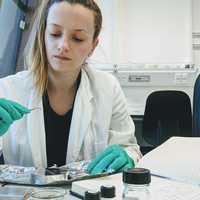

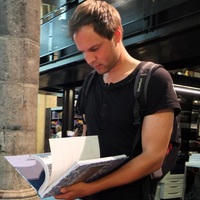



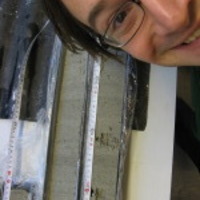




Uploads
Posters by Merita Dreshaj
Thesis Chapters by Merita Dreshaj
KEY WORDS: paleodiet, carbon isotopes, nitrogen isotopes, Bribirska Glavica, Ravni Kotari
Books by Merita Dreshaj
Papers in English by Merita Dreshaj
Papers by Merita Dreshaj
KEY WORDS: paleodiet, carbon isotopes, nitrogen isotopes, Bribirska Glavica, Ravni Kotari